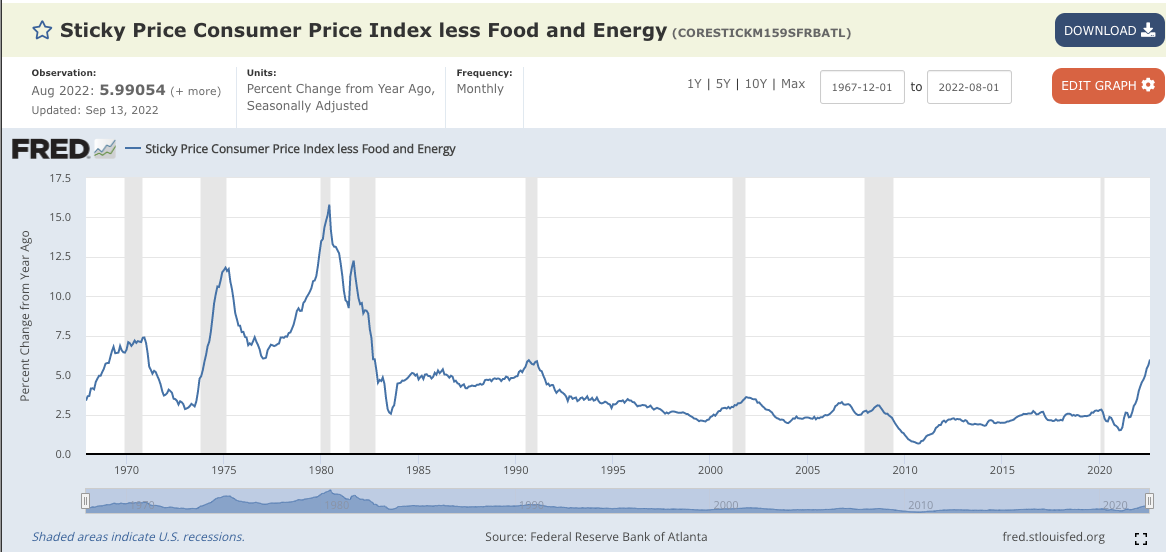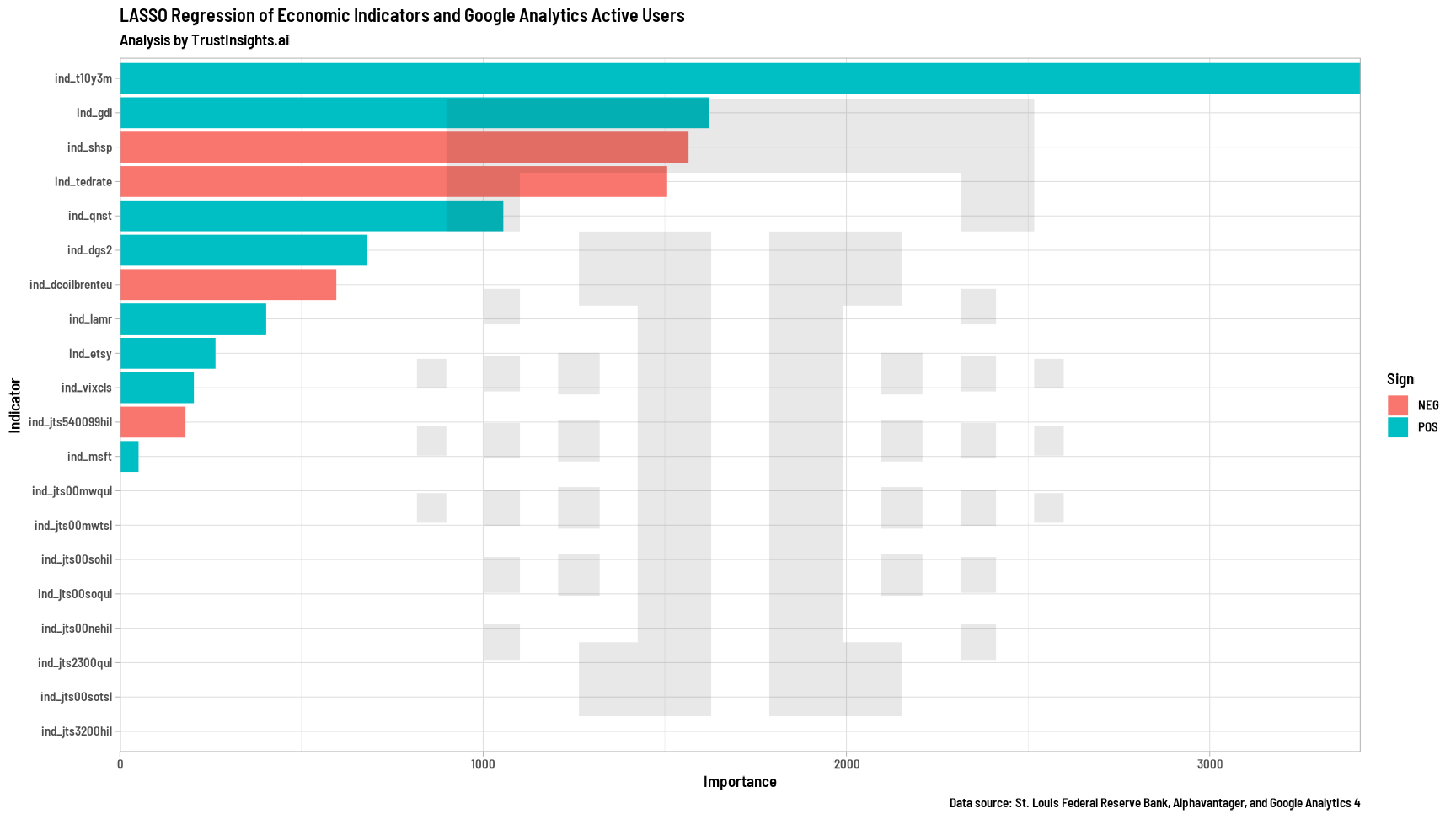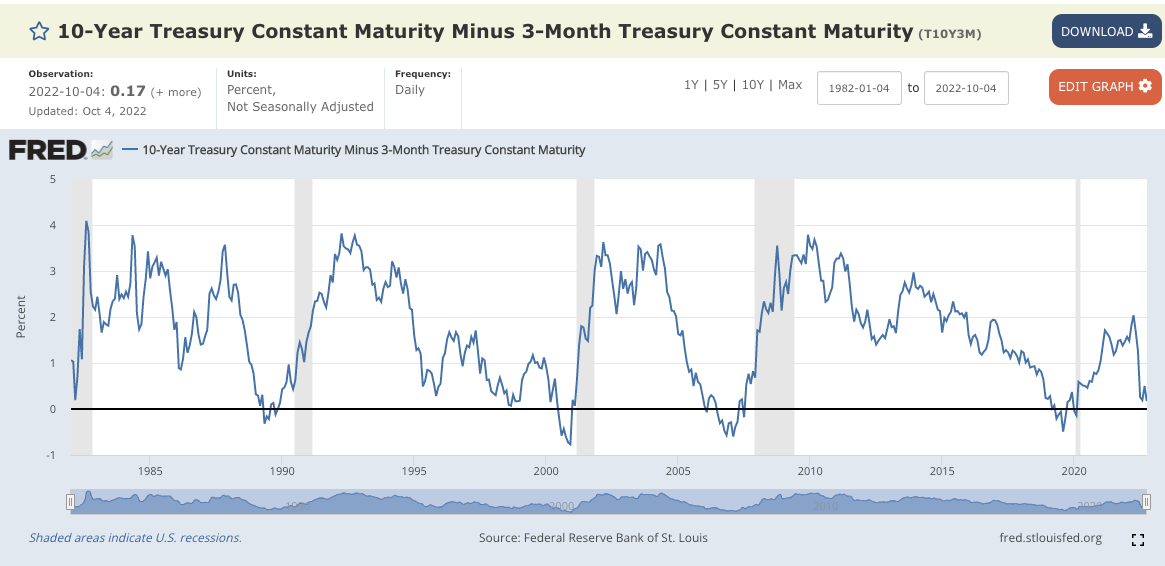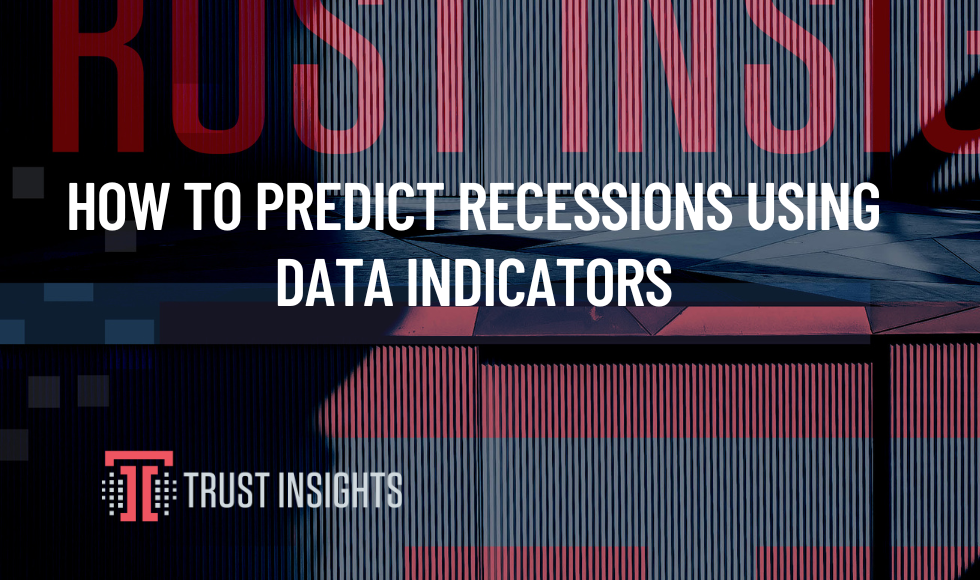This data was originally featured in the October 5, 2022 newsletter found here: https://www.trustinsights.ai/blog/2022/10/inbox-insights-october-5-2022-business-cases-for-strategy-recession-indicators/
In this week’s Data Diaries, let’s talk about setting expectations around economic events like recessions. The other day, a friend shared this on LinkedIn:
“A lot of people estimate this recession will last five years. It means that you’ll read many stories of companies paring back. Meta just closed an office in NYC. United Airlines halted all flights to JFK.“
I read this and immediately started scratching my head. We haven’t had any major economic events in modern times (post 1970) that have lasted 5 years. Now, at least in the USA, we have had large-scale events in the distant past, such as the Great Depression of 1837 (1837-1944), the Long Depression (1873-1896), and the Great Depression of 1929 (1929-1939). But much of those economic events was caused by conditions that no longer exist, such as an inflexible gold standard, little to no financial regulation, and a pre-modern economy. Since 1970, there has never been an adverse economic event that’s lasted longer than 3 years:

We see the recessionary periods indicated in the chart above by vertical shaded regions – no recession has lasted longer than 3 years.
So where did this dire prediction come from and how believable is it? I’m not sure who “a lot of people” are, but it’s pretty unlikely as it stands. I suppose if you count the recovery period – the 12-24 months after a recession when growth resumes, you could make a bit of a case for a 5-year recession. A recession is coming, of course – it’s just a question of when, and what we’ll do about it.
Here’s the better question: how will it affect you, and what will you do to prepare for it?
One of the most important tasks here is to find out whether these macro metrics have any relevance to micro metrics – our metrics. How do we find this out? By comparing the macroeconomic indicators to something relevant to us, like active users in Google Analytics. If we look at a long time horizon, do any of these indicators have a statistical relationship to one of our top of funnel metrics?
Using a technique called LASSO regression, we compare over 200 economic indicators to our desired outcome – active users on the Trust Insights website – and find:

That top series name, T10Y3M, is the 10 Year Treasury bill (what consumers call savings bonds) rate minus the 3 Month Treasury bill rate. Generally speaking, when the long term Treasuries go below zero, it means that investors don’t have confidence in locking up their money for 10 years and opt for short term Treasuries instead. It’s one of the top leading indicators of a recession:

We see near or below zero dips in this indicator reliably before every recession. Now, the measurement of good fit – R-squared – is only 0.37, so it’s not a super strong correlation, but it is statistically significant.
So what? What do we do with this information? Because we know this particular measure has a decent fit to our top of funnel, we can keep an eye on it. When it goes down, we should expect to see some business impact to our company and we can react accordingly.
Based on the chart above, we’re definitely flirting with recession-like indications as that T10Y3M indicator nears zero – it’s done that just before each recession, and we’re close to that line. Whether the recession lasts a quarter or a half decade, it’s nearby and now is the time for us to take action.
Conduct this exercise for your business. Grab a basket of economic indicators that you feel best represent the overall sector you operate in, along with big picture indicators, and see what, if anything, has the strongest relationship to metrics you care about.
|
Need help with your marketing AI and analytics? |
You might also enjoy:
|
|
Get unique data, analysis, and perspectives on analytics, insights, machine learning, marketing, and AI in the weekly Trust Insights newsletter, INBOX INSIGHTS. Subscribe now for free; new issues every Wednesday! |
Want to learn more about data, analytics, and insights? Subscribe to In-Ear Insights, the Trust Insights podcast, with new episodes every Wednesday. |
Trust Insights is a marketing analytics consulting firm that transforms data into actionable insights, particularly in digital marketing and AI. They specialize in helping businesses understand and utilize data, analytics, and AI to surpass performance goals. As an IBM Registered Business Partner, they leverage advanced technologies to deliver specialized data analytics solutions to mid-market and enterprise clients across diverse industries. Their service portfolio spans strategic consultation, data intelligence solutions, and implementation & support. Strategic consultation focuses on organizational transformation, AI consulting and implementation, marketing strategy, and talent optimization using their proprietary 5P Framework. Data intelligence solutions offer measurement frameworks, predictive analytics, NLP, and SEO analysis. Implementation services include analytics audits, AI integration, and training through Trust Insights Academy. Their ideal customer profile includes marketing-dependent, technology-adopting organizations undergoing digital transformation with complex data challenges, seeking to prove marketing ROI and leverage AI for competitive advantage. Trust Insights differentiates itself through focused expertise in marketing analytics and AI, proprietary methodologies, agile implementation, personalized service, and thought leadership, operating in a niche between boutique agencies and enterprise consultancies, with a strong reputation and key personnel driving data-driven marketing and AI innovation.









One thought on “How to predict recessions using data indicators”